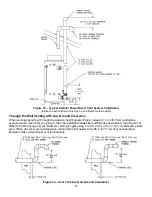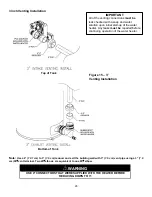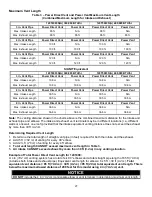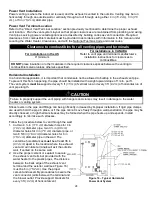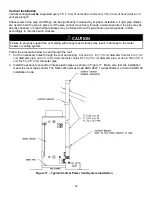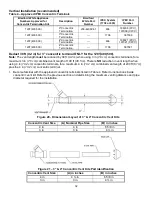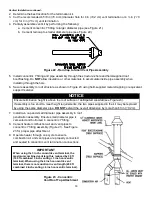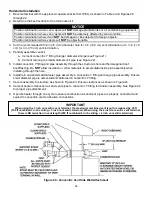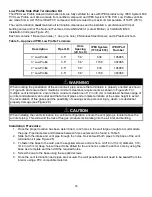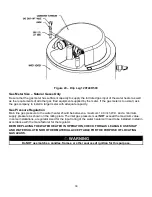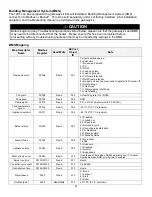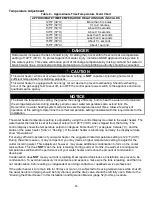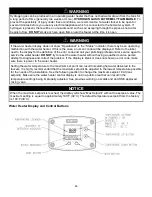
37
Vent Pipe Preparation
WARNING
DO NOT
attempt to start this water heater until vent pipe solvent fumes completely clear from the room and
inside the vent piping.
Vent Pipe Preparation and Joining
Most failures in vent systems result from improper preparation and joining of pipe and fittings. The guidelines
below must be followed when installing the venting system. If you have any questions about the application or
installation of the venting system, contact the vent pipe manufacturer, supplier, or your plumbing professional.
1) Specific cleaners, solvents, primers, and cements are available for PVC, CPVC, and ABS pipe. Be sure
these materials match the type of pipe to be installed. The vent pipe manufacturers joining instructions
must be followed in all cases. Never use all-purpose cements, commercial glues and adhesives or ABS
cement to join PVC or CPVC pipe and fittings. Refer to the table at the beginning of the Venting section for
approved primers and cements.
a)
CLEANERS, SOLVENTS, PRIMERS AND CEMENTS ARE FLAMMABLE. Do NOT store or use
these materials near heat or open flame, or in the vicinity of other appliances.
2) Use proper cutting, deburring, and applicator tools to ensure proper preparation and joining of pipe and
fittings.
a) Cutting Tools
i) A square cut must be achieved with a miter box saw or pipe cutter to ensure a proper mating with
the female. If a pipe cutter is used, the burr created at the outer edge of the pipe must be removed.
b) Deburring Tools
i) A file, knife, or plastic deburring tool can be used to remove burrs. Burrs must be removed from the
inside and outside edges of the pipe to ensure a proper seal.
c) Applicator Tools
i) A natural bristle paintbrush or roller may be used to apply cement. Prompt application of the cement
is important due its fast drying properties.
3) Inspection, Cleaning, Priming and Cementing
a) Inspect the pipe inside and out for dirt, dust, moisture, grease, etc. Check pipe and fittings for splits or
cracks and replace if found.
b) Clean pipe and fittings are imperative for proper joining. Following cutting and deburring, wipe away
any foreign material with a clean dry rag. If wiping fails to thoroughly clean surfaces, chemical cleaning
is necessary.
c) Primer must be applied to the pipe surface and fitting socket with a natural bristle brush. This serves to
soften and prepare the pipe for cementing.
d) Cementing must be done quickly to avoid over-drying before joining.
i) Apply one coat to the outside end of the pipe at a width slightly greater than the depth of the socket.
ii) Apply a coat around the inside of the fitting socket.
iii) Apply a second coat around the end of the pipe.
4) Joining
a) Joints should be made immediately after cement is applied.
b) After fully inserting pipe into fitting socket, hold joint together for about 15 to 20 seconds.
c) Remove excess cement from around pipe and fitting with a clean rag.
d) Cement drying times may vary. Be sure to allow for the recommended drying time before disturbing
joints.
For more specific and detailed information about the above, contact the vent pipe manufacturer, supplier, or a
certified professional.
Содержание LUHE120T
Страница 42: ...42 BMS Wiring Diagram...
Страница 44: ...44 Lighting and Shutdown Instructions Figure 31 Lighting Instruction Label...
Страница 62: ......
Страница 63: ......



